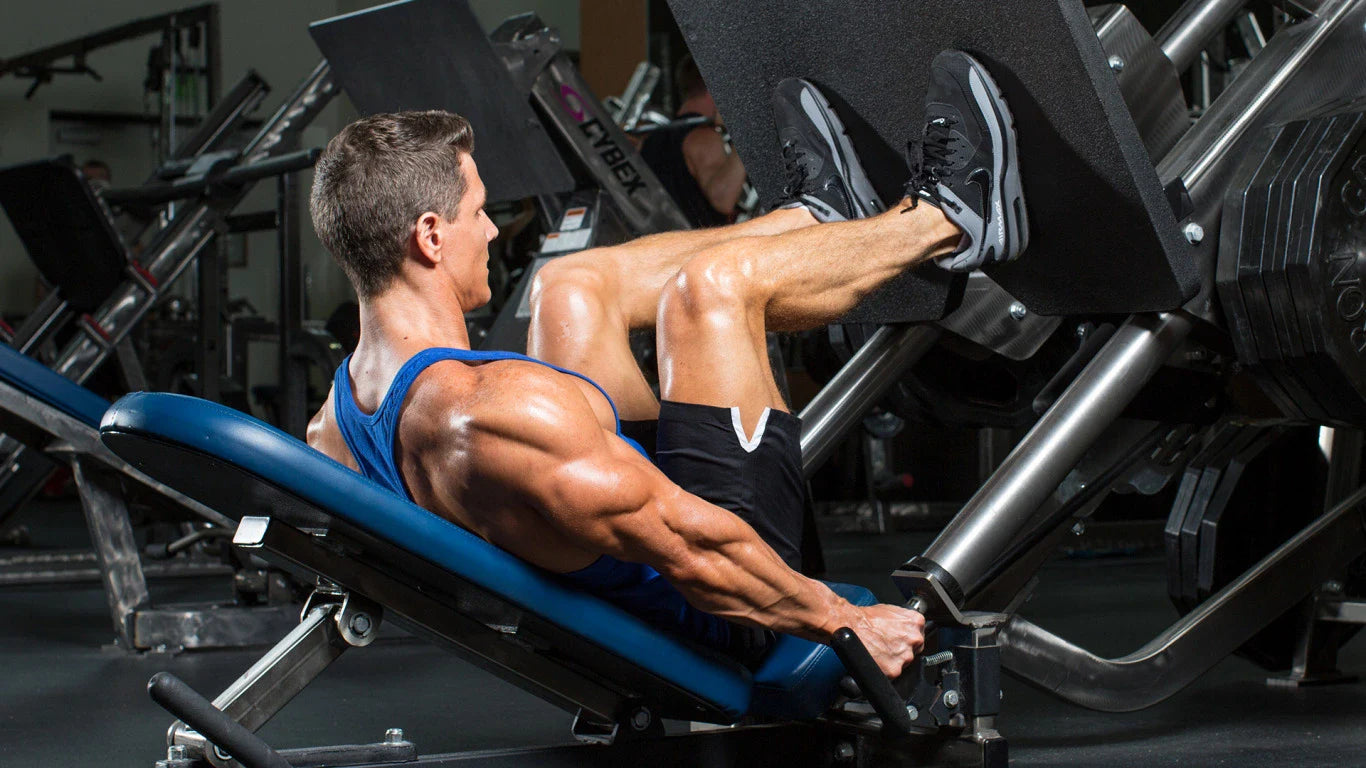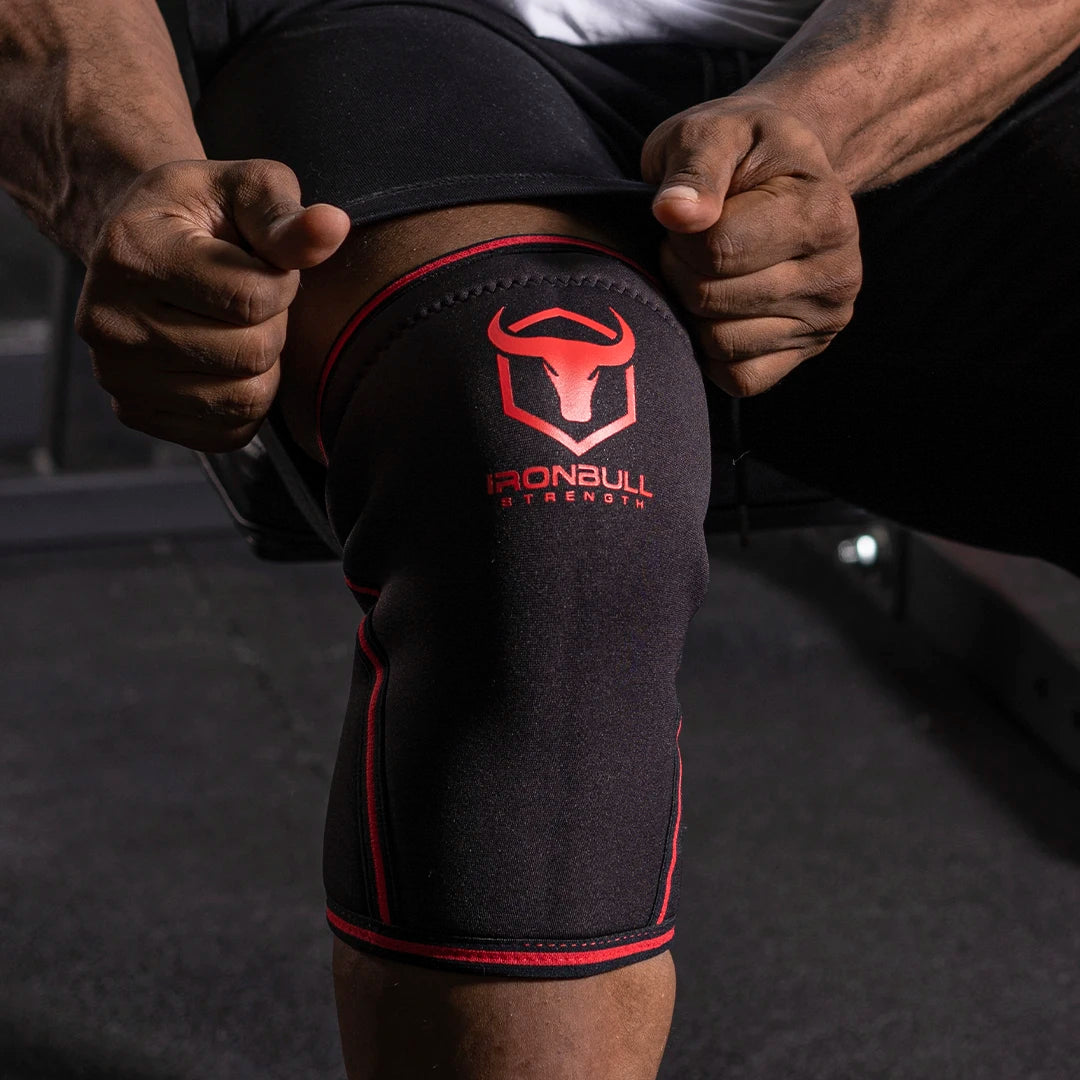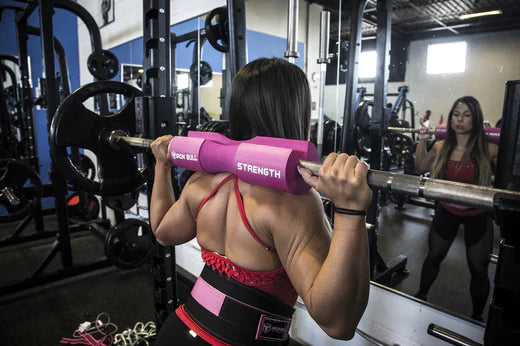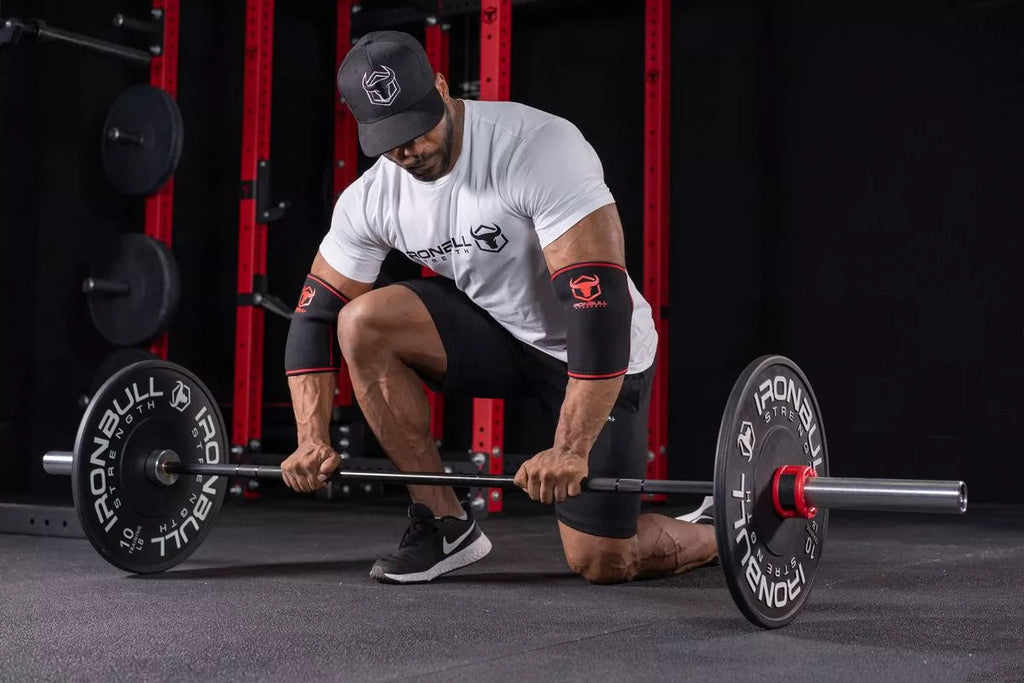Douleur au genou due à la presse à jambes : causes, solutions et conseils de prévention


À moins d'être jamais allé à la salle de sport, presque tous les sportifs ont déjà utilisé une presse à cuisses. Mais ce n'est pas parce qu'il s'agit d'une machine qui guide le mouvement qu'il n'y a aucun risque de blessure.
La douleur au genou liée à la presse à jambes, qui se manifeste par une douleur, un inconfort ou une blessure au genou pendant ou après les exercices de presse à jambes, est un problème courant. Dans cet article, nous aborderons l'importance de la traiter et de la prévenir, donnerons un bref aperçu de l'exercice de presse à jambes et discuterons de son impact potentiel, allant d'un léger inconfort à une douleur intense, sur la capacité d'un individu à s'entraîner efficacement.
Importance de traiter et de prévenir les douleurs au genou lors des exercices de presse à jambes
La gestion et la prévention des douleurs au genou lors des exercices de presse à cuisses sont essentielles pour maintenir les objectifs de forme générale et éviter des lésions à long terme de l'articulation du genou. En comprenant les causes des douleurs au genou et en mettant en œuvre des stratégies de prévention adaptées, il est possible de poursuivre la musculation sans compromettre la santé de ses genoux.
La presse à cuisses est un exercice de musculation populaire qui sollicite plusieurs groupes musculaires, principalement les quadriceps, les ischio-jambiers et les fessiers. Elle consiste à pousser une plateforme vers l'extérieur du corps avec les jambes, imitant ainsi un mouvement de squat. La presse à cuisses offre stabilité et soutien tout en permettant de cibler des muscles spécifiques des jambes.
Causes de la douleur au genou lors de la pression des jambes
Un mauvais positionnement des pieds sur la presse à cuisses peut augmenter la tension sur l'articulation du genou et les structures environnantes. Placer les pieds trop haut ou trop bas sur la plaque peut altérer la biomécanique de l'exercice et entraîner des douleurs au genou.
Maintenir une posture et une technique appropriées pendant l'exercice de presse à cuisses peut contribuer à l'apparition de douleurs au genou. Il est essentiel de maintenir une colonne vertébrale neutre, d'éviter une flexion ou une hyperextension excessive du genou et de veiller à l'alignement des genoux avec les orteils pendant le mouvement.
Une faiblesse ou un déséquilibre des muscles entourant les articulations du genou et de la hanche, comme les quadriceps et les ischio-jambiers, peut exercer une pression supplémentaire sur l'articulation du genou lors de l'exercice de presse à cuisses. Renforcer ces muscles et assurer un développement équilibré est essentiel pour prévenir les douleurs au genou.
La pratique excessive d'exercices de presse à cuisses ou le soulèvement de charges supérieures à ses capacités peuvent entraîner des douleurs au genou. Le surentraînement exerce une pression excessive sur l'articulation du genou, entraînant inflammation et inconfort.
Les personnes ayant des antécédents de blessures au genou ou des problèmes de genou existants sont plus susceptibles de ressentir des douleurs au genou lors des exercices de presse à cuisses. Les lésions antérieures de l'articulation du genou peuvent s'aggraver lors de certains mouvements, entraînant douleur et inconfort.
Comprendre l'articulation du genou et les muscles associés
L'articulation du genou est une articulation charnière qui relie le fémur au tibia et à la rotule. Elle est composée de plusieurs structures, dont des ligaments, des tendons, du cartilage et des muscles, qui travaillent ensemble pour assurer la stabilité et faciliter les mouvements tels que la flexion et l'extension.
L'exercice de presse à cuisses sollicite principalement les quadriceps, les ischio-jambiers et les fessiers. Les quadriceps, situés à l'avant de la cuisse, étendent le genou pendant le mouvement de presse à cuisses. Les ischio-jambiers, situés à l'arrière de la cuisse, participent à la flexion du genou et à l'extension de la hanche. D'autres muscles des jambes, comme les adducteurs et les abducteurs, jouent également un rôle dans la stabilisation de l'articulation du genou pendant l'exercice.
Maintenir un bon équilibre entre les muscles entourant l'articulation du genou est essentiel à sa santé et à la prévention des blessures. Un déséquilibre entre les quadriceps et les ischio-jambiers, par exemple, peut accroître la tension sur l'articulation, contribuant ainsi aux douleurs et aux blessures.
Blessures et affections courantes du genou liées à l'exercice de presse à jambes
Le syndrome de flexion du genou (SPF) est une affection caractérisée par une douleur autour ou derrière la rotule. Il est souvent causé par une mauvaise orientation de la rotule lors de mouvements comme la presse à cuisses. Une faiblesse des quadriceps, une raideur des muscles environnants ou une mauvaise posture peuvent contribuer au SPF.
La tendinite rotulienne, également appelée genou du sauteur, est une blessure due à une sollicitation excessive qui entraîne une inflammation et des douleurs au niveau du tendon rotulien. Cette affection peut être aggravée par une contrainte excessive exercée sur le tendon lors des exercices de presse à jambes, surtout s'ils sont effectués avec une technique incorrecte ou une charge excessive.
La douleur antérieure du genou se caractérise par une douleur et une gêne à l'avant du genou, souvent dues à un déséquilibre de la force musculaire ou à un mauvais suivi de la rotule. Une mauvaise technique ou une mauvaise répartition de la charge lors des exercices de presse à jambes peuvent contribuer à cette douleur.
L'arthrose du genou est une maladie dégénérative des articulations qui entraîne une dégradation du cartilage de l'articulation du genou. Des exercices de presse à jambes excessifs ou inappropriés peuvent accélérer la progression de l'arthrose du genou et aggraver les symptômes.
En plus des conditions mentionnées ci-dessus, les exercices de presse à jambes peuvent aggraver d’autres blessures au genou, telles que les foulures ou déchirures ligamentaires, les blessures méniscales et les lésions du cartilage.
Stratégies de prévention et de traitement
Il est essentiel de bien positionner les pieds sur la presse à cuisses pour maintenir une posture correcte et réduire la tension sur l'articulation du genou. Les pieds doivent être écartés de la largeur des épaules, les orteils légèrement pointés vers l'extérieur. Placer les pieds trop haut ou trop bas peut augmenter le risque de douleurs et de blessures au genou.
Maintenir une posture et une technique correctes tout au long de l'exercice de presse à cuisses est essentiel pour minimiser les risques de douleurs et de blessures au genou. Cela implique de maintenir une colonne vertébrale neutre, d'éviter une flexion ou une hyperextension excessive du genou et de veiller à un bon alignement des genoux avec les orteils.
Pour prévenir les douleurs au genou lors des exercices de presse à cuisses, il est essentiel de renforcer et d'entraîner les muscles entourant les articulations du genou et de la hanche. Des exercices comme les squats, les fentes et les extensions de jambes peuvent contribuer à améliorer la force, la stabilité et l'équilibre du bas du corps, réduisant ainsi le risque de douleurs au genou.
Les personnes souffrant de douleurs au genou lors des exercices de presse à cuisses peuvent bénéficier de bandages pour genoux ou d'autres équipements de soutien. Ceux-ci peuvent apporter une stabilité et une compression supplémentaires à l'articulation du genou, réduisant ainsi l'inconfort et favorisant un bon alignement.
Si les exercices de presse à cuisses provoquent régulièrement des douleurs au genou, il est conseillé d'intégrer d'autres exercices pour les jambes, qui offrent des bienfaits similaires sans aggraver les problèmes de genou. Les squats ou les hack squats, par exemple, ciblent les mêmes groupes musculaires tout en offrant une amplitude de mouvement différente.
Le repos et la récupération jouent un rôle crucial dans la prévention des douleurs au genou et la préservation de sa santé globale. Il est recommandé d'intégrer des jours de repos à son programme d'entraînement pour permettre à l'articulation du genou de guérir et de récupérer du stress lié à l'exercice.
Si la douleur au genou persiste ou s'intensifie, il est conseillé de consulter un kinésithérapeute ou un spécialiste en médecine du sport. Ces experts pourront réaliser une évaluation approfondie, proposer un traitement et des plans de rééducation personnalisés, et conseiller sur la posture et la technique appropriées.
Utilisation de genouillères
En appliquant une compression, les genouillères contribuent à réduire le gonflement et l'inflammation, ce qui peut être bénéfique en cas de douleur antérieure du genou ou de syndrome fémoro-patellaire douloureux. Elles favorisent également un bon alignement et un bon suivi du genou lors des exercices de presse à cuisses, essentiels à la prévention des blessures au genou.
Les genouillères offrent un soutien précieux au quadriceps, un muscle essentiel aux exercices de presse à cuisses. Ce soutien contribue à réduire les tensions et la fatigue musculaires, permettant ainsi d'effectuer l'exercice avec un meilleur contrôle et une meilleure posture. De plus, les genouillères facilitent la flexion et l'extension du genou, mouvements essentiels aux exercices de presse à cuisses. En exerçant une légère pression sur la rotule et le tendon rotulien, elles contribuent à stabiliser le genou et à réduire les risques de blessures.
Importance de l'entraînement musculaire global des jambes et du bas du corps
La pratique régulière d'exercices et de musculation, notamment de presse à cuisses, offre de nombreux bienfaits pour la santé des genoux. Renforcer les muscles entourant l'articulation du genou peut assurer sa stabilité, améliorer son alignement et réduire les contraintes exercées sur l'articulation, diminuant ainsi le risque de douleurs et de blessures.
Intégrer divers exercices pour les jambes et le bas du corps, comme les squats, les fentes et les flexions des ischio-jambiers, peut contribuer à maintenir l'équilibre musculaire, à prévenir les blessures dues au surmenage et à renforcer la force globale du bas du corps. Équilibrer les exercices de presse à cuisses avec d'autres exercices permet de ne solliciter aucun groupe musculaire de manière excessive, réduisant ainsi le risque de douleurs au genou.
Intégrer des jours de repos et une récupération adéquate dans la routine d'entraînement
Des jours de repos et une récupération adéquate sont essentiels à tout programme d'entraînement, notamment pour prévenir les douleurs au genou. Laisser au corps, y compris à l'articulation du genou, le temps de récupérer et de se réparer est crucial pour la santé à long terme du genou.
Conclusion
En conclusion, la douleur au genou lors de la presse à jambes est une préoccupation fréquente chez les personnes pratiquant ce type d'exercice. En comprenant les causes de la douleur au genou, l'anatomie de l'articulation et le rôle des muscles environnants, il est possible de prendre des mesures proactives pour prévenir les douleurs et les blessures au genou.
Adopter une posture et une technique appropriées, des exercices de renforcement et de conditionnement, du repos et de la récupération, ainsi que consulter un professionnel sont essentiels pour préserver la santé de vos genoux et atteindre vos objectifs de remise en forme à long terme. N'oubliez pas que privilégier la santé de vos genoux permet de progresser continuellement en musculation et de développer le bas du corps tout en minimisant les risques de rechutes ou de douleurs chroniques.



